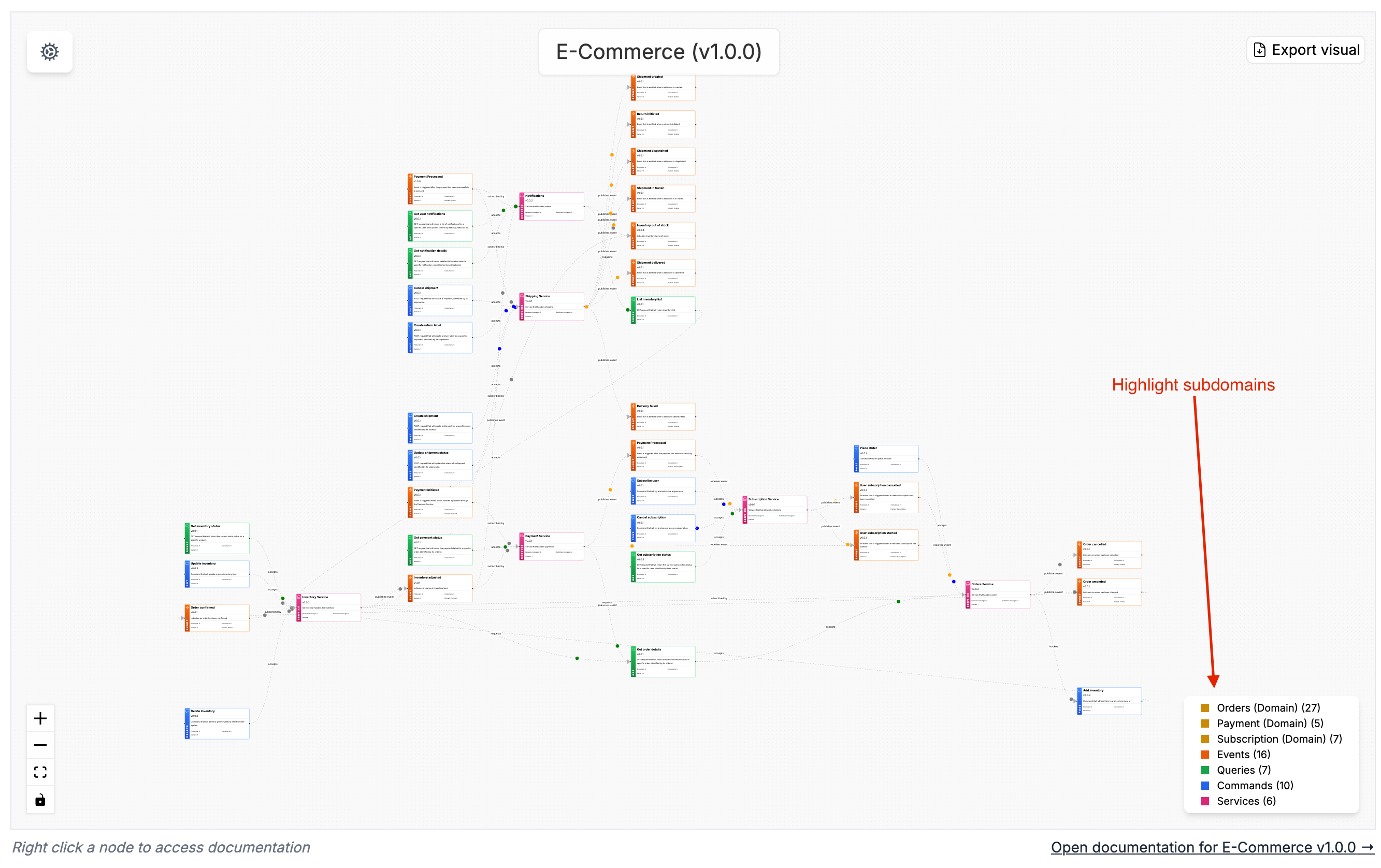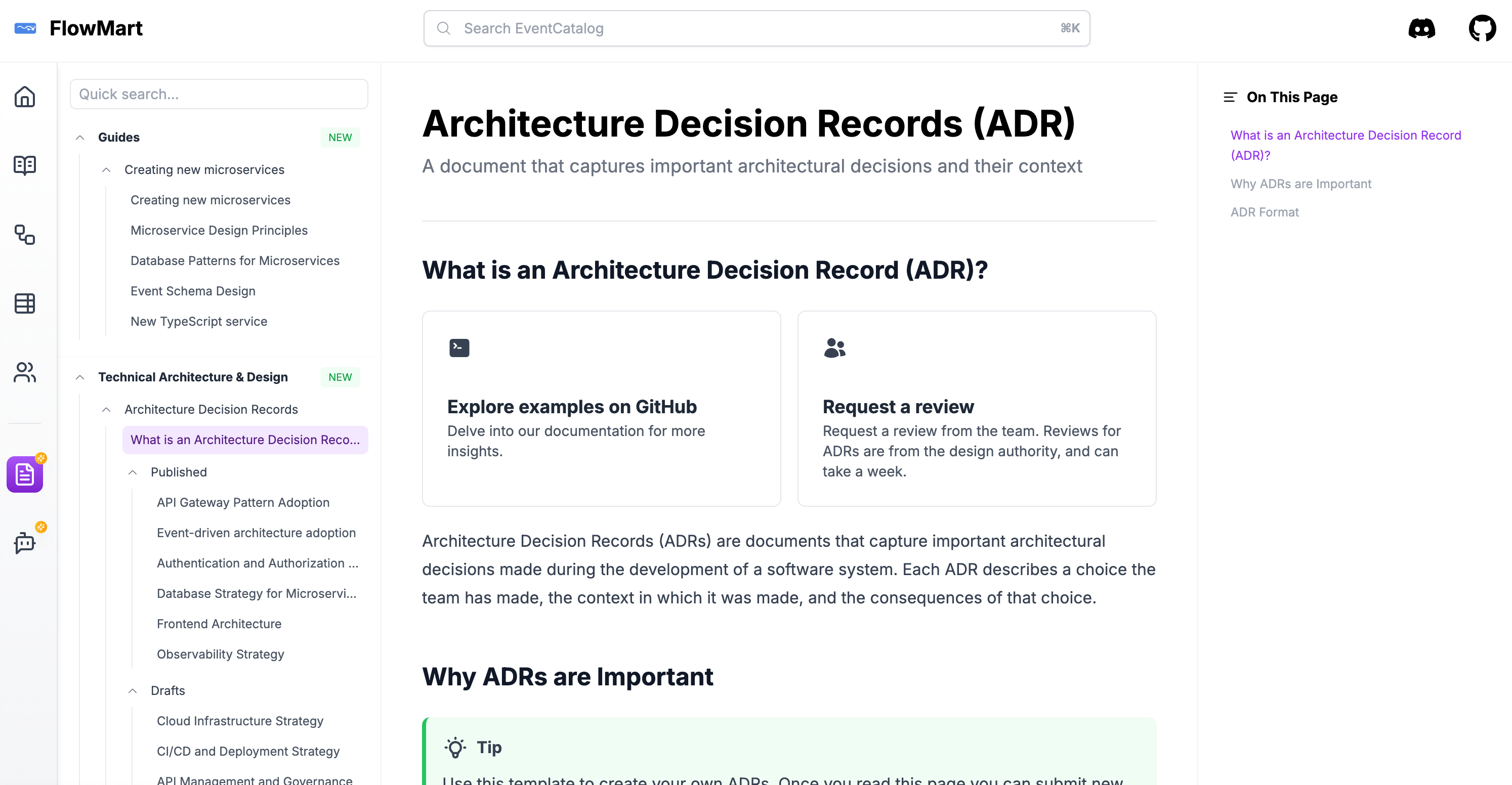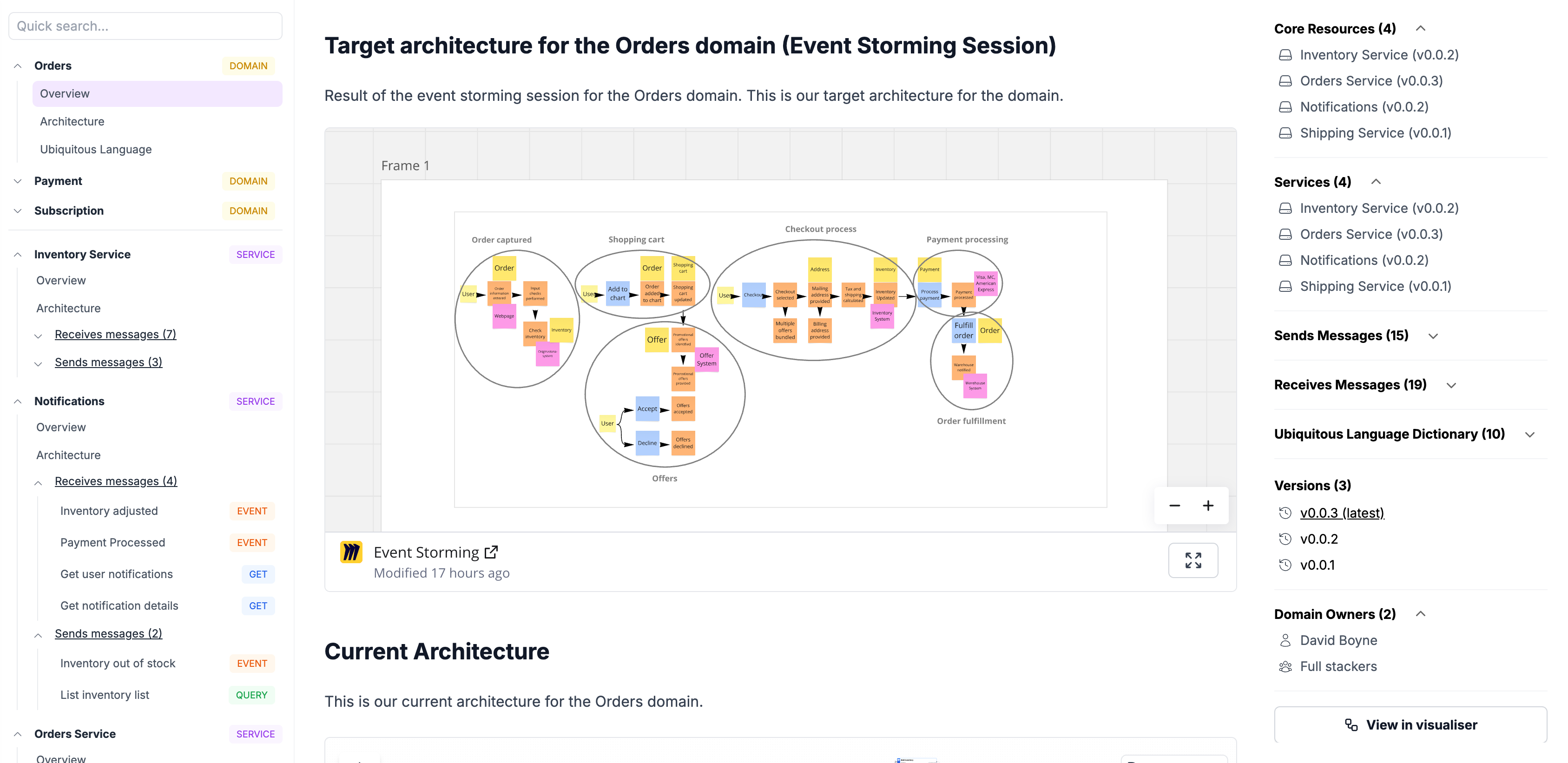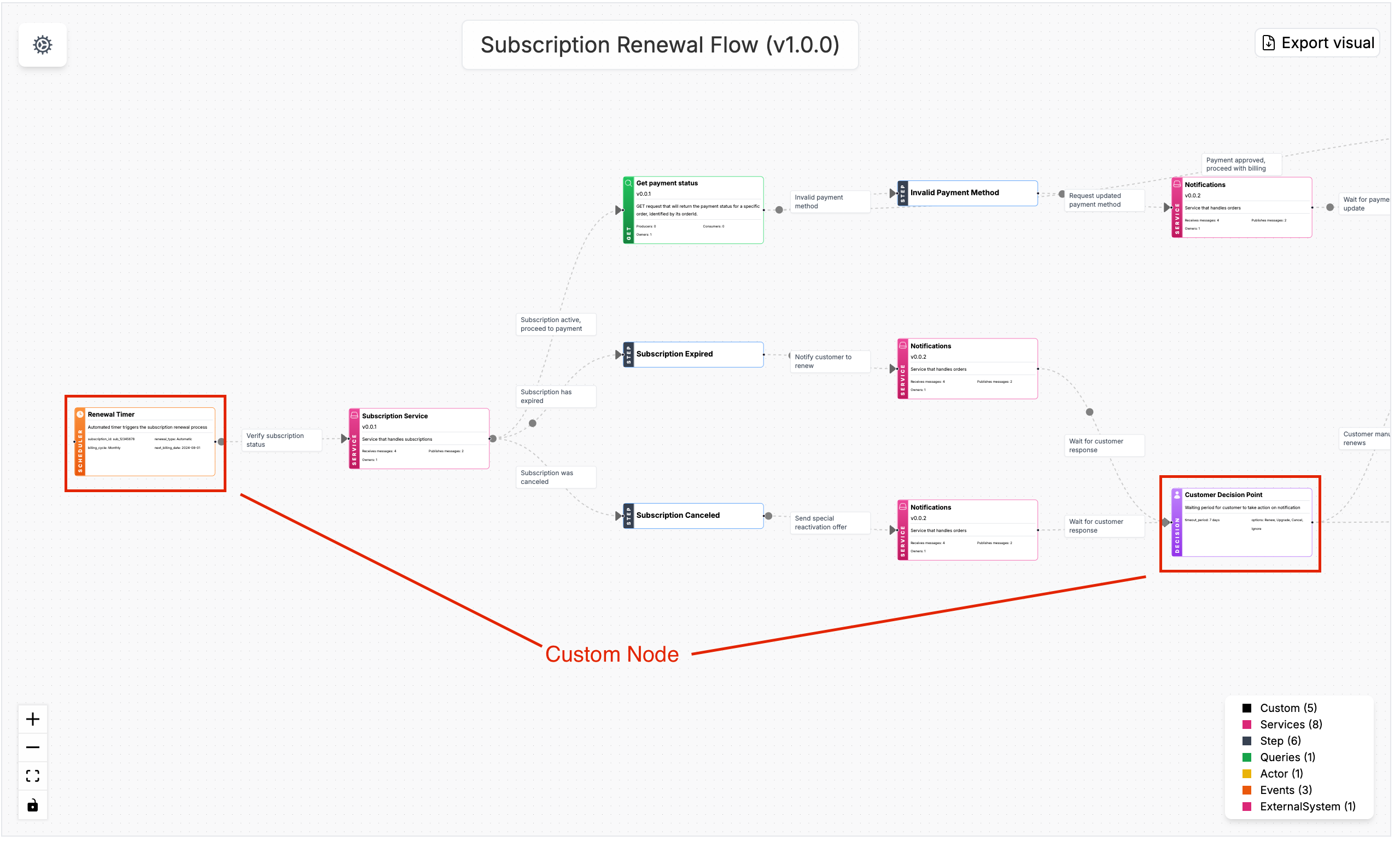Whats new in EventCatalog - April 2025
Welcome to the monthly update for EventCatalog, here you find what's new in EventCatalog, what's coming next, and how to get started.
- EventCatalog Growth update 🚀
- Subdomains are now supported in EventCatalog
- Bring your own documentation to EventCatalog
- Bring your own AI keys (OpenAI) to EventCatalog Chat
- Embed diagrams into EventCatalog
- Resources can now be marked as deprecated
- Flow improvements
- Other project improvements
What’s coming in May?
EventCatalog Project update
EventCatalog community continues to grow ❤️, now we have 1,127 Discord members (^3%), 2.1k Stars on GitHub (^5%), 879 new catalogs have been created in April (^7.20%) and 14.8k catalogs built into production (^32.59%). EventCatalog continues to grow every month, and super excited to see where the project can go!
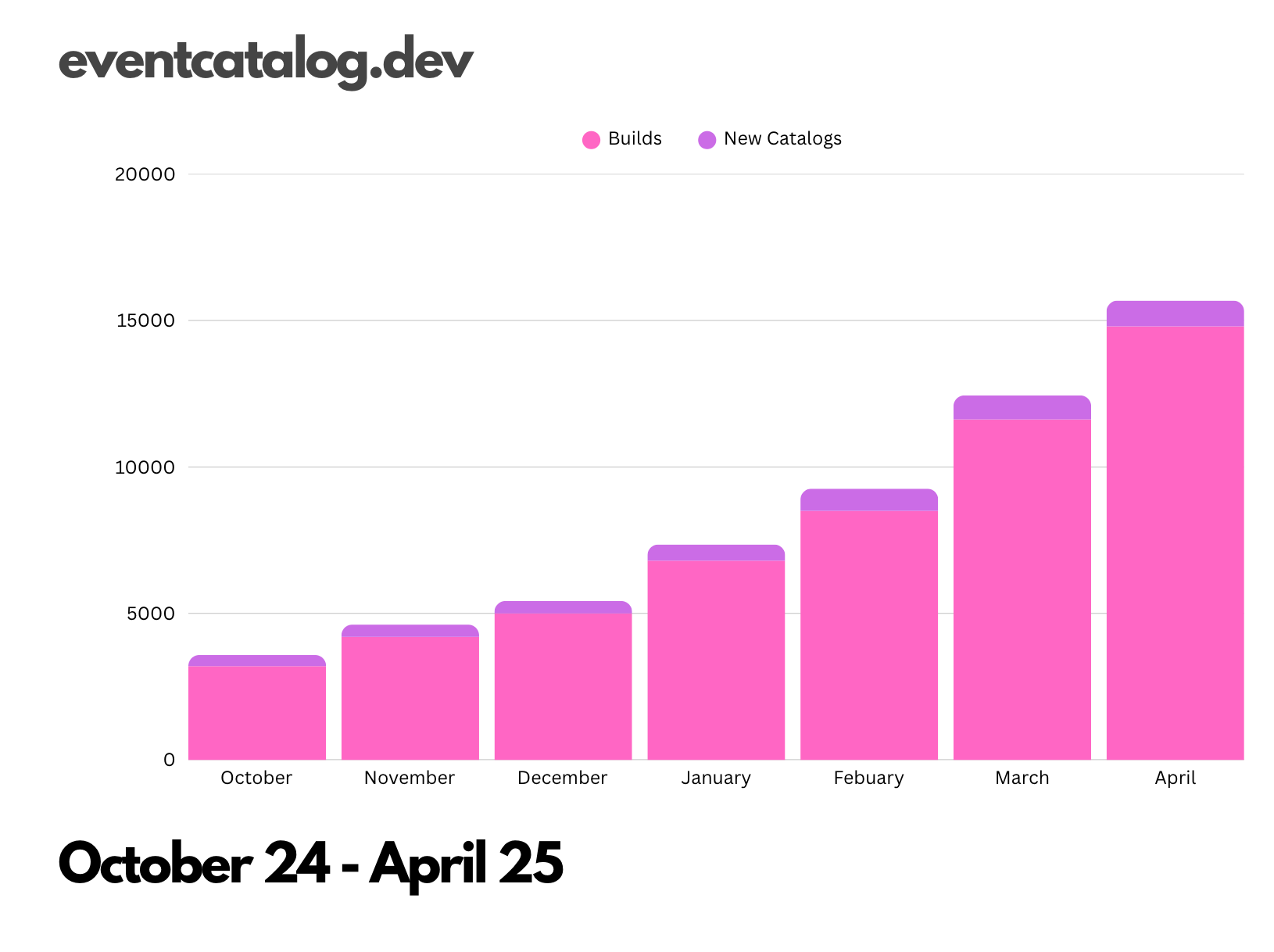
EventCatalog sponsors OSO and Gravitee continue their sponsorship for the project (thank you!) 🙏. This sponsorship helps my goal towards open source sustainability. EventCatalog is free to use and open source, if you want to support the project checkout the tiers on GitHub or contact me directly at dave@eventcatalog.dev , I really appreciate any support ❤️
In April we introduced Subdomain support, Bring your own documentation to EventCatalog with custom documentation, with EventCatalog Chat you can now bring your own AI keys starting with OpenAI support, embed diagrams (Miro, Lucid, FigJam and DrawIO) into your pages with realtime editing, mark messages as deprecated and much more.
In this blog post we will dive deeper into features and improvements that were released in April, and how you can get started.
Subdomains are now supported in EventCatalog
Many users of EventCatalog are following domain driven design practices. One thing missing from EventCatalog was the ability to create subdomains.
Subdomains look and behave the same as domains in EventCatalog, but they introduce a new way to group domains together.
An example of a domain and subdomain relationship is:
Domain: EcommerceSubdomain: OrdersService: PaymentService: Shipping
Subdomain: CustomersService: ProfileService: Address
Subdomain: InventoryService: ProductsService: Warehouse
In this example, the Ecommerce domain contains the Orders, Customers and Inventory subdomains. Each subdomain contains services that are related to that subdomain.
When you add a subdomain to a domain, your users will be able to see the relationship between the domain and subdomain, navigate between them and see subdomains within the visualizer.
What do subdomains look like in EventCatalog?
You can now quickly see domains/subdomain relationships in EventCatalog. The page below shows a parent domain, with subdomains. Users can quickly navigate to subdomains using the sidebar or navigation panel.
Subdomains are also visualized in EventCatalog. Using the filter you can highlight resources that belong to a certain domain. This let’s your teams get a visual of the whole domain (including the services, and messages) and dive deeper if they need into their subdomains.
To start adding subdomains to your documentation you read the documentation.
Bring your own documentation to EventCatalog
In April we released a new feature called Custom Documentation. This gives you the ability to add any documentation you want to EventCatalog. This can be a great way to extend your catalog beyond what is provided, and bring your own documentation to EventCatalog, rather than having documentation spread across multiple tools.
Custom documentation also supports all components in EventCatalog, this let’s you embed the EventCatalog Visualizer into your documentation, your diagrams from Miro, Lucid or Draw.io and much more.
Custom documentation is flexible and let’s you document anything you want. For example you could document Architecture Decision Records, Infrastructure & Operations, CI/CD configurations, team processed, onboarding information and much more….
To start adding custom documentation you can read our getting started guide.
Bring your own AI keys to EventCatalog Chat
EventCatalog is technology agnostic, and can integrate with any broker and specification in the world. This let’s you document your architecture, topics, messages, services, and domains into EventCatalog, once captured, this context can be used within LLMs.
EventCatalog Chat gives you the talk to your architecture, and can help your team find insights in seconds rather than hours or days.
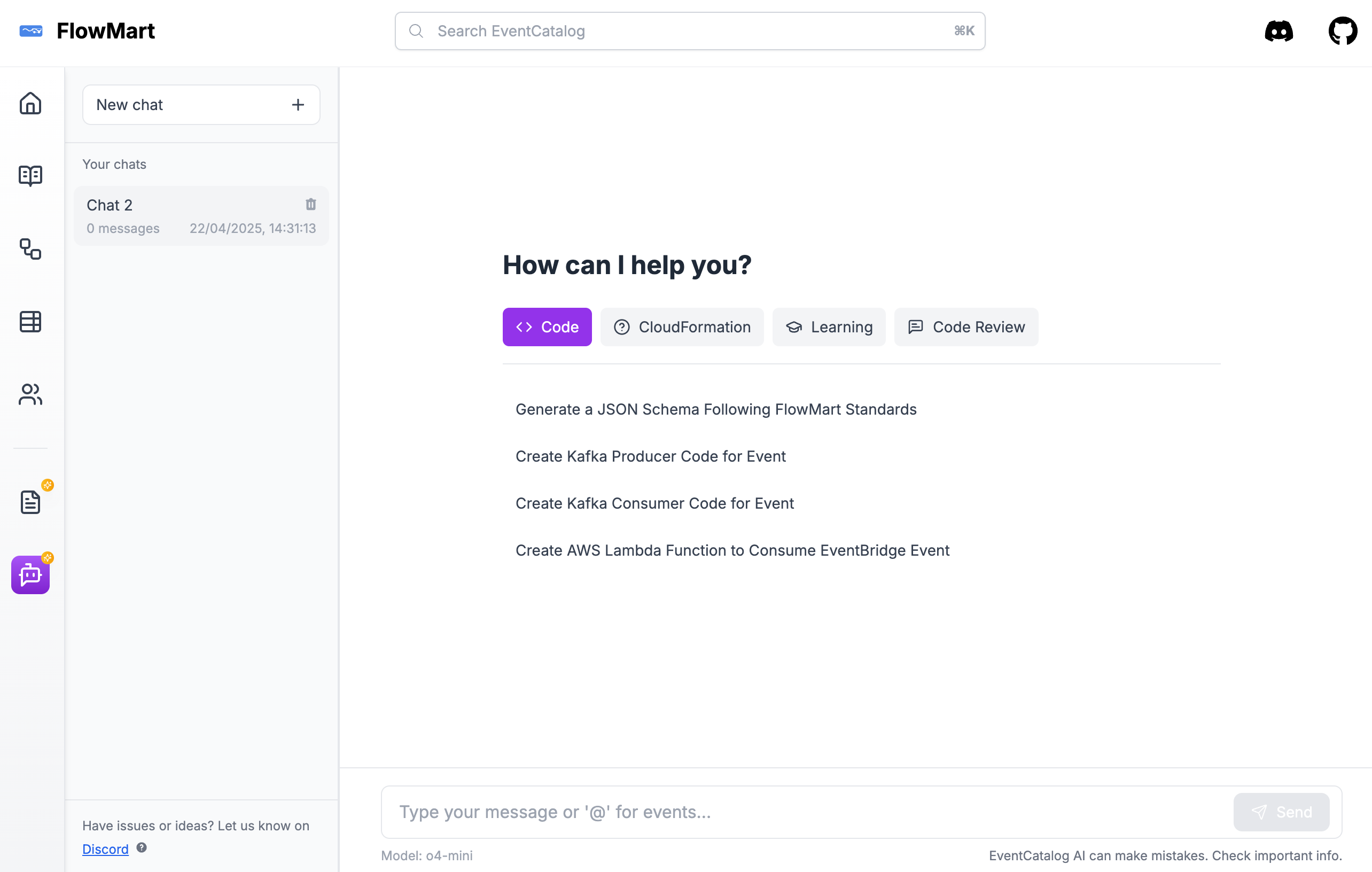
EventCatalog Chat support browser based models, and now supports OpenAI models.
You can now bring your own OpenAI keys into EventCatalog, deploy EventCatalog on a server and let your teams start to get insights about your architecture. You can choose your model and embedding models for your catalog information.
EventCatalog also provides a prompt store. This gives you the ability to provide a library of prompts for your teams to get started with, and also create dynamic prompts for your teams.
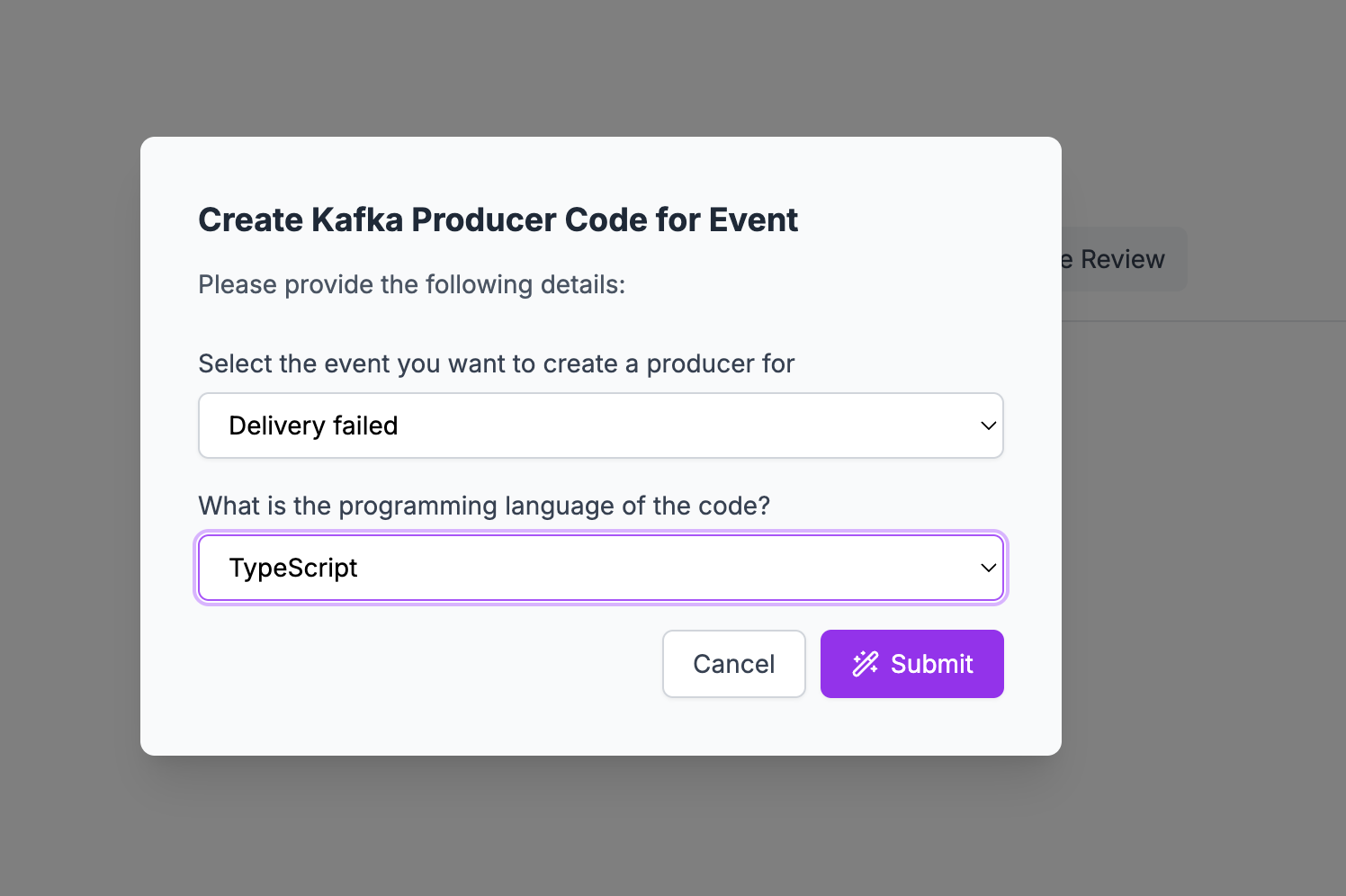
To get started you can watch the video below, or read our OpenAI getting started guide, and you can learn more about our prompt store reading the prompt store guide.
Embed diagrams into EventCatalog
You can now embed diagrams with EventCatalog, including Miro, Lucid, DrawIO and FigJam
No longer have diagrams that sit and get stale, embed them into your documentation for your teams to quickly find, edit and collaborate.
To learn more you can read our component documentation.
Resources can now be marked as deprecated
Sometimes your messages or services may get deprecated. You can now use the new deprecated property in EventCatalog to mark your resources as deprecated.
When you mark a resource as deprecated you can specify the date and message to show to your teams. This lets you deprecate things in the future, and help your teams understand what they should do to migrate away from a message, version or service.
---
id: OrderService
... # other service frontmatter
# deprecatd as an object (Recommended)
deprecated:
# Date the service will be or was deprecated (YYYY-MM-DD)
date: 2025-01-01
# Reason the service is deprecated, supports markdown (optional)
message: |
This service has been deprecated and replaced by the new service **InventoryServiceV2**.
Please contact the [team for more information](mailto:inventory-team@example.com) or visit our [website](https://eventcatalog.dev).
# deprecated as a boolean
deprecated: true
---
To get started, you can read our guide on how to deprecate a service, or deprecate a message.
Flow improvements
EventCatalog Flows allow you to document interactions between services and messages. Flows give you the ability to document event-driven architecture choreography.
Flows can now reference other flows, helping you manage large scale flows in your diagram. This let’s you break out business processes in subflows and visualize them in your architecture
steps:
- id: "step-1"
title: "Example Step of a Event"
# here we define the id and version of the flow we want to use in the flow diagram
flow:
id: "order-flow"
version: 0.0.1
You can also now create your own custom nodes in your flow diagrams. This gives you the flexibility to create any type of visualization for your documentation.
To learn more, you can read our getting started with flows guide, and explore the custom nodes in our documentation.
Other project improvements
- EventCatalog SDK has been updated to match all the new features.
- We added ResourceLink and Link components to help you create links in your catalog
- Badges now support icons in EventCatalog
- GRPC and ZMQ protocols have been added to channel documentation
- Visualizer can now be embedded into custom docs
What’s coming in May?
In May we are releasing even more integrations with EventCatalog, including Confluent Schema Registry, Azure messaging services and Azure schema registry, Apicurio schema registry and GitHub integrations (for those that keep schemas in GitHub). These new integrations will let you add semantic meaning to your schemas, and keep your schemas in sync with your documentation, giving your teams the ability to quickly find the information they need in your architecture.
We are also adding Anthropic and Gemini support for EventCatalog Chat. This will let you bring even mode models to your documentation, allowing you to query and gain insights using the models you use in your organization.
We also want to release the first version of our Schema API. This will let you call EventCatalog as an API to get your schemas, which could be useful for contract testing, validation and much more. We are looking to follow the xRegistry specification for this.
Many users of EventCatalog, are using EventCatalog as a design > implement > documentation tool. We are exploring ways to draft messages, services and resources in EventCatalog. We expect to release the first version of this in May.
We know a lot of people are waiting for EventCatalog Studio. We are still working on this, and aim to get an initial version out soon.
We are coming to Current London
We are coming to https://current.confluent.io/london in May! If you are coming to the conference, we would love to hang out, just reach out!

If you have any questions or want to join our community of over 1100 people exploring EventCatalog and event-driven architecture feel free to join us!

